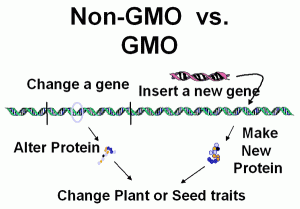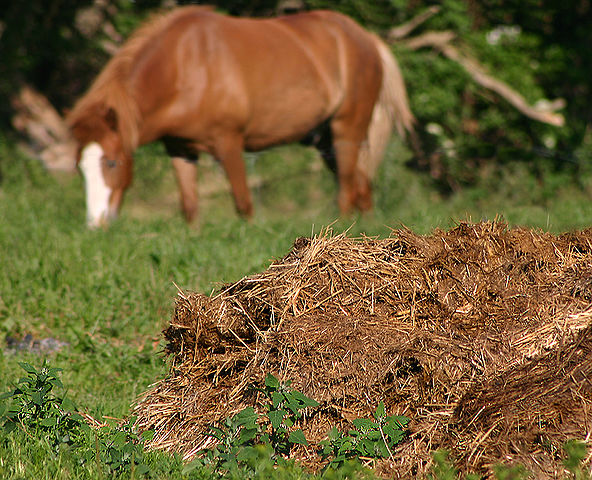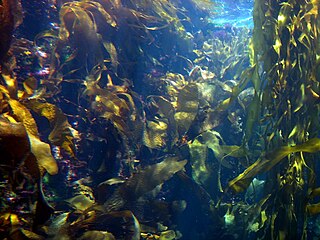
I was asked by Dr. Linda Chalker-Scott to look up some information in order to answer a recent comment and question on a previous post.
Paraphrased, the question is, “… are there any verifiable “organic” fertilizers that can be guaranteed to be made from 100 percent non-GMO sources.”
First off, let me state up front that the whole “Non-GMO” labeling effort is pure marketing. There is no evidence to suggest products that come from genetically engineered crops are any different than crops made from other plant breeding methods. The body of evidence in fact suggests they are as safe as their conventional counterparts, and have some excellent benefits to farmers and consumers from an economic and environmental standpoint.
Having gotten that disclosure out of the way, and assuming that price is not a factor, it turned out to be an interesting question to answer.
“USDA Certified Organic” fertilizers would be problematic, since there are exceptions to the organic standards, which allow manures fed GE crops to be used.
Similarly, oilseed meals like cottonseed, soybean meal, etc. also can be certified organic, even though they come from genetically engineered crops.
ALFALFA MEAL

One possible alternative in that category is alfalfa meal, since genetically engineered alfalfa is currently grown on only 13.5% of alfalfa acreage, whereas in the case of cottonseed, soybean, sugar beet, and corn products, the rate of adoption of genetically engineered crops is well over 90% of U.S. acreage.
Only about 13.5 percent of harvested U.S. alfalfa acreage is genetically modified, compared to more than 90 percent of corn, soybeans, cotton, canola and sugar beets acres, according to a new USDA report that cites 2013 farmer surveys.
It appears likely the percentage of genetically engineered alfalfa will continue rising, though: Roughly one-third of newly seeded acreage planted that year was of a biotech variety resistant to glyphosate herbicides, USDA said.
Farmers have been slower to adopt genetically engineered alfalfa partly because it’s a perennial crop that stays in the ground for roughly five years, said Dan Putnam, an alfalfa extension specialist at the University of California-Davis.
It would be incumbent upon the buyer to ask, however, if the alfalfa meal came from a grower who does not use genetically engineered alfalfa, and whether or not the supplier of the alfalfa meal guarantees that.
MANURES FROM LIVESTOCK FED ONLY ORGANIC FORAGE

“Demeter USA” … the private certifying entity that guarantees “Biodyamic” preparations does require that any manures come from livestock fed only “USDA Certified Organic” feed. So manures that carry that seal should satisfy the question.
As an aside, here is Dr. Linda Chalker-Scott’s literature review of “Biodynamics” and why that certification has little science to recommend it.
Further, finding the product would be difficult, since it is primarily produced on-site at certified Biodyamic farms, and used there.
SEAWEED FERTILIZERS

Next products that might qualify are seaweed, or kelp products. There are no genetically engineered seaweed/kelp products I’m aware of. However, there are real concerns about the sustainability of harvesting seaweed and kelp from the wild.
Dr. Linda Chalker-Scott wrote about them here:
The ecological impacts of increased seaweed harvesting are currently under investigation and the possibility of significant ecosystem damage is real.
There is however, some interesting research and startup companies that are farming seaweed and kelp for a variety of potential uses.
I can’t however, find any products available for the home gardener that are sourced from this effort. Still early.
So, when it comes to seaweed/kelp products, you’ll have to (again) ask a reputable supplier to answer the “sustainable” question.
BAT GUANO

In a similar vein, “Bat guano” products would also qualify as “non-genetically engineered”, but the sustainability question also comes into play. How is it harvested?
I can’t deny that it’s a great fertilizer, but if you want to use an organic fertilizer why not at least consider one that is renewable instead of one that is from a limited resource and which may cause harm to a unique ecological system?
SEAFOOD BY-PRODUCTS

Fertilizers made from by-products of the seafood and fish industries, assuming they don’t come from aquaculture farms, since the livestock feed for those operations could be sourced from genetically engineered crops, do have a history.
Two links (there may be others, but these seem sufficient for now), a comprehensive review of products (including fertilizers) from the Alaska seafood industry, put together by Oregon State University …
Fish Fertilizer Product Descriptions
Fertilizers are characterized by their Nitrogen-Phosphorous-Potassium content (N-P-K). Therefore all fish material will have some fertilizer value since fish contain protein which is Nitrogen,
the bone contains Phosphorous and the flesh and bone contain Potassium. Generally, fish products are re-allocated to fertilizer use for any number of reasons including quality too poor for feeding, volume too small to convert to fishmeal and oil, and an available agricultural market in the vicinity of the waste material.
And a similar document put together by Michigan State University about the use of fish by-products for other uses.
In an effort to help the Michigan fish processing industry find better solutions to handle fish processing waste materials, a project was initiated to determine the viability of composting fish waste.
CHILEAN NITRATE
There is a mineral product called Chilean Nitrate or Nitrate of Soda that is mined from a desert in northern Chile that is allowable for use under the standards for organic production in the U.S. However, it is not allowed for use under Canadian, or international organic standards, and a change to prevent its use under U.S. standards is still pending. Up until 2012, this was the wording for its use.
Sodium nitrate, also known as chilean nitrate, cannot account for more than 20 percent of the N requirements of organic crops in the United States.
Its use is also prohibited by the International Federation of Organic Agriculture Movements (IFOAM) and most other standards for organic production outside the United States.
After 2012, the 20% restriction was dropped in the U.S.
The expiration of the current notation will effectively mean that sodium nitrate may be used in organic crop production without a specific restriction on the amount used: however, producers must continue to comply with all requirements of the soil fertility and crop nutrient management practice standard.
Although the National Organic Standards Board (NOSB) recommended that sodium nitrate become a completely prohibited nonsynthetic substance, the NOP has not issued rule-making to carry out this recommendation as of yet.
FEATHER MEAL
A by-product of the poultry industry. Is it from poultry fed only non-GMO feed?
LOCALLY PRODUCED
The final piece of the puzzle can be found (only partly in jest) in Dr. Jeff Gillman’s post about a cheap, locally available source of Nitrogen.
You’d be saving yourself the cost of fertilizer, saving the environmental cost of shipping the fertilizer you might otherwise purchase, saving water, and you’d have something unique to tell your gardening friends about. Win – win situation as far as I’m concerned.
In summary, I don’t buy into any of the fear-based marketing of products that come from genetic engineering. There may be (at this time) sources of alfalfa meal that do not come from genetically engineered sources.
Biodynamic manures certified by Demeter USA require that the animals be fed only “USDA Certified Organic” feed, but will be difficult to come by. Seaweed/Kelp and Bat guano products would qualify, but have major sustainability questions about them. Lots of potential with seafood/fish by products, and finally … a personal possible solution.
Many thanks to Emanuel Farrow, a consultant to both conventional and organic farmers, who helped point me in the right direction and provided important fact checking expertise for this post.

If the fertilizer is certified organic, there will be no GMO products in the fertilizer.
That’s what I thought at first, also. However, manures from livestock fed genetically engineered crops, are fine for USDA certified organic.
And while there might be restrictions on the use of cottonseed, soybean, and alfalfa meal in organic production, they are still allowed. The only way to be sure is if they come from certified organic farms.
That is precisely why I was searching for non-GMO fertilizer/compost from livestock not fed GMO grains. So, while I take issue with some comments below, I am grateful that you have created a dialogue about this at all. I had to do real, earnest searching for information and pages like this that I have found. ~Not like most other Google info searches. I had to actually dig some. Thanks for addressing the topic, even if I do agree with Naomi Zürcher in that I believe your opening stance on the topic is dismissive. It almost appears to look like you wish to discuss a controversial topic but don’t desire your fellow “professors” to judge you for it, and that you’d like to tow the line or status quo, which is, “GMOs…..Nothing to see here folks, keep moving.” For what it’s worth, it did get me digging even deeper than I planned to and I’m personally better for it. So thanks for that.
As an Urban Forester, a Consulting Arborist, a certified Master Composter and a trained beekeeper, I take extraordinary exception to the opening statement: “First off, let me state up front that the whole “Non-GMO” labeling effort is pure marketing. There is no evidence to suggest products that come from genetically engineered crops are any different than crops made from other plant breeding methods. The body of evidence in fact suggests they are as safe as their conventional counterparts, and have some excellent benefits to farmers and consumers from an economic and environmental standpoint.”
Aside from being somewhat arrogant, it completely ignores the larger environmental and ethical issues of GMO production which includes:
• the grossly exacerbated use of Glyphosate because the inserted gene caries resistance to other herbicides, e.g. RoundUp ready Soy; the evidence of increased RoundUp use is well documented and has been found in Mother’s milk, drinking water etc. Instigating mechanisms that add more chemicals to our environment is not conducive to environmental or human health;
• privatization and control of seed – a grossly unethical practice – is part and parcel of the GMO production philosophy; at a time when we are losing flora and fauna species at an alarming rate, it is unacceptable to reduce biodiversity for financial gain.
Since genes do not function is independent entities but rather as part of an interactive network, we have no idea what the long term outcome of “inserting a gene to accomplish…” can instigate – first to the plant or animal and their environment and second, to anyone consuming same. We have no idea what the vector that was used to insert the gene is comprised of? Those of us that might be skeptical might want to know that the plant or animal in question was genetically manipulated. We might be concerned as to its potential long term effects and not wish to consume such products or support products with so many ethical issues. The only way we can know any of that IS IF IT’S LABELLED. That’s not MARKETING, that’s wanting to know what you are buying – normally considered a right.
GMO production is using the globe for a genetic experiment that is still in its infancy. The possible long term outcomes of this experiment have not been researched as the ongoing takeover of seed used for varied purposes has proceeded at a pace where long term analysis is not yet possible. Making such statements as the author has made is scientifically not acceptable and flies in the face of logic.
Lots of unsupported assertions in that comment. Let’s take a look.
Re marketing, as the embedded link to the Science Moms says …
And U. of Chicago Law Professor, Omri Ben-Shahar has more.
Re Breast Milk. Here’s WSU researcher Dr. Michelle McGuire.
The issue that Naomi Zürcher was bringing up about glyphossate being found in lactating women’s milk is not HOW MUCH based on geographical location….it’s that it was found AT ALL. Where the women lived is irrelevant. If found in the milk and fed to babies then we DO NOT KNOW the repercussions that can occur based on such an infant feeding plan. Scientists at any one of the notable institutions mentioned above cannot find evidence showing any ill effects of glyphosate on the reproductive health or the health of their offspring because absolutely no university research ethics review board is going to sign off on such a study where women and children may purposely be exposed or will be studied for having unknowingly been exposed to a potential toxin such as this.
Any private studies done would have been paid for by those who have a financial interest to know such information, (especially to be prepared financially with a wagered guess at future lawsuits….a cost already built into the product before it ever even hit the markets) namely, the companies that produce and market such products, companies like Monsanto. It’s the same way we can’t know largely the potential effects of pharmaceuticals on pregnant women and unborn fetuses because it would be unethical to test on them.
My guess is that they will wait until the damage has been done and then let those unfortunate results be the impetus to tweak their formulae and file a new patent for well less than all the suffering their product causes world wide. How anyone could be cavalier and take any of this lightly is mind boggling. More so when the persons who do so state “up front” that their qualifications should render their opinion trustworthy. Naomi is right. Prefacing your reply to this serious question with a blow off is dismissive and reveals a prejudiced conclusion before having even given any serious thought to the matter.
Further, stating that notable institutions have found no evidence of ill effects on the end user/consumer should be done with a tongue in cheek. These same notable institutions, including the U.S. Government in any of its myriad related departments, also once said that Polio Vaccine was safe, that Black Service Members were being treated for disease when they were rather being inoculated with syphilis….a disease which was not eradicated in the study but which found its way out into modern society and which is still being reported to the CDC and which still kills unborn and newborn infants of every race, class, and any other taxonomy you’d like to study….to this day. They said certain vaccines with thimerosol were not neurologically injuring babies. They even said SMOKING was good for you….Doctors being used to advertise one brand over another.
Only an unwise person would go along with our trusted white coats on everything. To NOT QUESTION, to NOT HOLD ACCOUNTABLE with ACCURATE labeling….to just go with the flow…..that would be (convenient for some) irrational, and counterintuitive to our own self-preservation. To browbeat people into NOT raising questions and concerns and expecting earnest, FRUITFUL and CONSTRUCTIVE dialogue is negligent at best and diabolical at worst.
(1) Our abilities to determine substances in human tissues has improved vastly in the last several decades. What’s important is the level at which a substance will have a negative effect.
(2) There are toxicity studies on surrogate animals (like rats) because of the ethics issue with human experimentation. It’s not perfect but it does inform mammalian toxicity.
(3) Please stop with the comments about how science is tainted by industry and how science “failed” to note issues related to smoking (among others). The reason we KNOW that smoking is a problem is because of SCIENCE. Science evolves. Our knowledge base evolves. You know this.
As far as Glyphosate safety, in general, is concerned, here’s some perspective on that.
“Glyphosate residues pose as much risk as drinking half a teaspoon of wine every seven years”
A “half a teaspoon of wine every seven years” will not be found in a lactating mother’s breast milk. So, NO. Not buying that.
This comment makes no sense. We’re talking about relative risk here. Not what’s found in breast milk.
Personally, I would be more concerned about the toxic heavy metal content of breast milk. There are NO safe levels of lead, arsenic, cadmium, etc. Yet you will find those in breast milk. Here’s a link for a study on this topic.
https://www.ncbi.nlm.nih.gov/pmc/articles/PMC2569122/
Regarding environmental impacts of GMOs …
Lots of research on how the use of genetically engineered crops have environmental benefits including reduced insecticide use, more efficient use of existing farmland, and the enabling of more widespread adoption of no-till or conservation tillage practices.
Documented well here.
Then there are the environmental impacts of “non-GMO” practices. Sugar, for example.
You obviously did drink the Kool Aid. Wonder whose payroll you are on. I will turn these comments over to some of the authorities that I recognize and have them review as your information is Monsanto propaganda and not scientifically based. Monsanto has bought its fair share of people to spread its Gospel and clearly you have cornered the market.
Making a statement that GMO production may be more sustainable equates with Trump’s twitter talk.
If this is what this website generates as science-based information for people seeking some help, I think i am in the wrong place.
Naomi, you’re out of line. Ray’s on no one’s payroll. Accusing any of us for being shills for industry is unconstructive and petty.
You need to spend some time with the science-based information that’s out there. Ray provided links to much of this. There’s way too much fear-mongering on this topic because there’s too little objective, courteous discussion. That’s what this site tries to provide.
Linda, the opinions offered by Mr. Eckhart, based on the limited time GMO production has been in full swing, are off-base as only long term studies will be able to show what he is claiming. At this stage of the game, to completely deny the concerns as “fear-mongering” is foolhardy given all the past experience we have with biological tinkering.
Just look at the response to pathogens and the introduction of “absolutely safe” biological controls, many of which became new disasters when, for example, introduced species attack non-target hosts or an introduced species is so at home and has no competition in its new location, it becomes the new pest, e.g. the now infamous mongoose in Hawaii. Many of these problems occurred because the field trials were incomplete or rushed to allow for quicker commercialization.
To make such profound assertions that GMOs are safe and beneficial is to fly in the face of our history. Having the questions that should and must be asked disparaged and cast aside as marketing or fear-mongering negates what science does best – ask questions, over and over again.
Mr. Eckhart has provided links to one side of the story and one side only. There have been numerous attempts on the part of Monsanto and Company to silence objections, questions, contrary research and that’s what this feels like. Not the objective approach you claim at all.
Making comparisons to other technologies really isn’t relevant to the question. What I’d like to know is what risk, exactly, you think that a genetically modified organism presents? Genetic modification happens continually in nature. We’ve been selectively breeding plant and animals for centuries – that’s genetic modification too. Our cells contain bacterial DNA in our mitochondria. That’s certainly evidence of significant genetic modification during the early history of life.
As an example, let’s consider an apple that’s been genetically modified to not turn brown when it’s cut because the gene for polyphenoloxidase has been modified. Would you eat that apple? Why or why not?
Regarding intellectual property rights … this is a subject that is not restricted to genetic engineering, but all plant breeding efforts, including organic ones.
I fail to see how growing “copies” of seeds, which as we all know, were originally found in the wild and then cultivated through countless generations, countless farmers, and as you say, which may have even changed genetically untold numbers of times in some way or another, can be considered to have infringed on anyone else’s sense of propriety. No man MADE nature. Humans have changed it, and those versions, if they would like to say are proprietary, I can conceive of as being so….but to save your Non-GMO seeds and grow plants which make seeds, save them and then sell them if you will, because of one’s own adept skill in farming successfully….being an affront to some company is mind boggling. Seriously? I don’t desire to buy product A b/c of their method of creating it so I buy product B. That’s my right. To be FORCED to buy product A when I don’t prefer that one and there is another available, either b/c NEW laws restrict the sale of perfectly suitable product B in deference to company that makes Product A….or which refuses to allow the sale of Product B when used in lieu of Product A is a racket. Plain and simple.
Regardless of whether you agree with patent law, it really has nothing to do with the post. And it certainly isn’t Ray’s fault. He’s simply pointing out reality.
And while I don’t expect anyone to absorb all the data in the National Academies of Science report (as linked in the blog post), here’s a summary from one of the committee members from Penn State University, Dr. Leland Glenna.
Regarding arguments that genetic engineering techniques are somehow unnatural … the case of Sweet Potato provides an interesting counter-example.